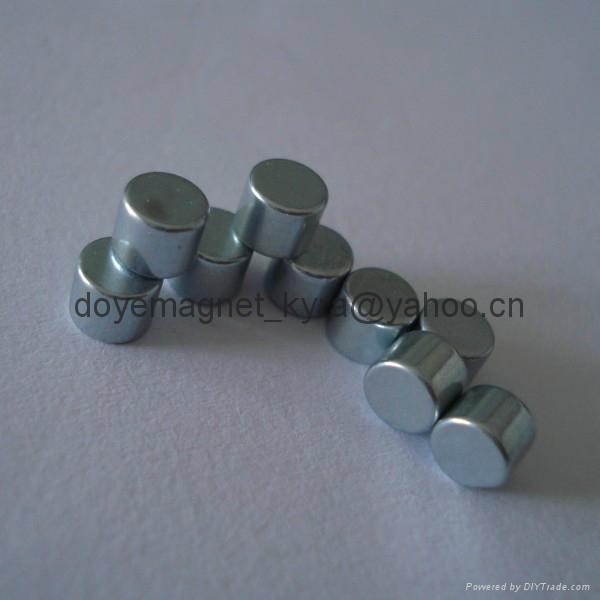

Apart from its traditional applications, the product is now witnessing significant penetration in the motors of electric and hybrid electric vehicles, wind power generators, air conditioning compressors & fans, and energy storage systems. Over the past five years, the application scope of NdFeB magnets has broadened considerably. Neodymium Iron Boron (NdFeB) is projected to emerge as the second-largest material segment with the fastest CAGR, in terms of volume as well as the revenue over the forecast period. Furthermore, they are also utilized in loudspeakers, separation equipment, Magnetic Resonance Imaging (MRI), relays & switches, and holding & lifting applications. Over 65% of the total volume of ferrite magnets are utilized in motor applications, with consumption in automotive motors, appliance motors, HVAC motors, and industrial & commercial motors estimated roughly at 18%, 14%, 13%, and 12%, respectively, in 2020. Ferrite magnets are primarily used in motor applications. The ferrite material segment dominated the market in 2021 and accounted for the largest volumetric share of more than 80.6%.

government to uphold industrial production, the domestic market for permanent magnets has undergone a steady recovery in 2021. On account of the massive fiscal packages offered by the U.S. The recovery was observed during the last quarter of FY 2020 as the manufacturing sector resumed production in a staggered manner. The emergence of the COVID-19 pandemic directly impacted the operations of key manufacturing and industrial sectors in the country, thereby resulting in a GDP decline of nearly 3.5% in FY 2020. Such initiatives are likely to strengthen the raw material supply for the domestic industry in the U.S. To reduce its reliance on raw material sourcing of rare earth materials, the government has taken various steps including funding mining projects under the Defense Production Act. The escalating trade war with China is likely to represent a significant challenge for the U.S., as China threatens to cut off its supply of rare earth and associated products to the U.S. However, due to fewer permanent motor magnet manufacturers in the country, it imported 4 million pounds of automotive parts from China, with the bulk of them being electric motors. In early 2018, Tesla became one of several electric carmakers to use motors with neodymium magnets. The country has been witnessing a significant rise in the adoption of plug-in electric cars, primarily driven by the advanced products offered by key players, such as Tesla, Chevy, Nissan, Ford, Audi, and BMW, among others. Since the economic meltdown of 2008-09, the automotive industry in the U.S. is expected to grow at a higher rate than its ferrite counterpart over the forecast period owing to its wide usage in high-end applications like robotics, wearable devices, electric vehicles, and wind power. The demand for rare earth magnets in the U.S.

Rare earth magnets, such as Neodymium Ferrite Boron (NdFeB), are being predominantly used in wind turbines owing to benefits, such as increased reliability and reduction in maintenance costs. At present, permanent magnets are used in wind turbine generators for increasing their efficiency. The rising prominence of renewable energy sources, such as wind and solar, is anticipated to positively aid the market growth over the forecast period.

They include individual magnets, bulk magnet materials, magnetic assemblies, magnetic sweepers, magnetic lifts, magnetic sheet handlers, magnetic retrievers, and permanent / electromagnet combinations.The global permanent magnets market size was valued at USD 19.14 billion in 2021 and is expected to expand at a compound annual growth rate (CAGR) of 8.4% from 2022 to 2030. Industrial magnets are manufactured for industrial use. In respect to this, what is an industrial magnet? The strongest permanent magnets in the world are neodymium (Nd) magnets, they are made from magnetic material made from an alloy of neodymium, iron and boron to form the Nd2Fe14B structure. Beside this, what is the strongest magnet? Thereof, which magnets are used in industries?Īmong the most frequently used industrial magnets are those made from neodymium and samarium cobalt, also known as rare earth magnets, ceramic (ferrite) magnets, electromagnets and alnico magnets. In fact, a single Neo magnet, weighing only a few grams can hold up to a thousand times its own weight. They're also the most powerful commercially produced industrial magnet on the market. Neo magnets are ten times stronger than the strongest ceramic magnet.


 0 kommentar(er)
0 kommentar(er)
